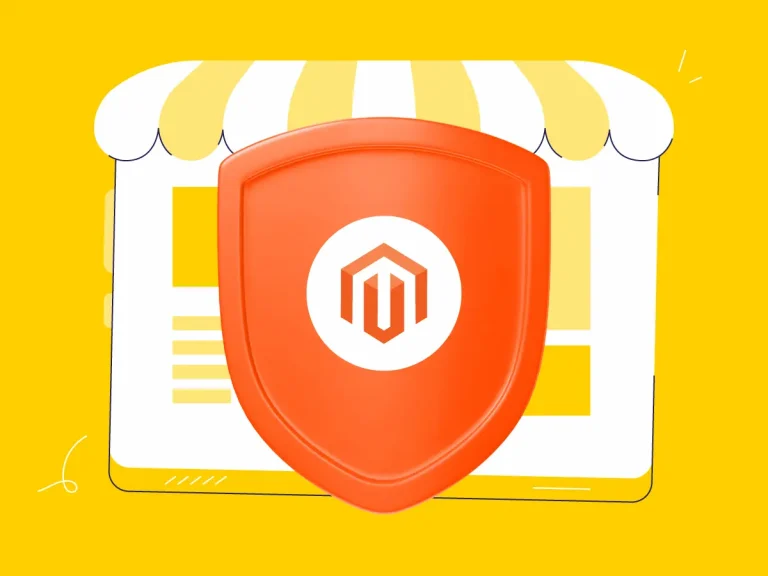READING TIME: 10 mins
How to Estimate Software Development Costs
March 21, 2024

Alex Kornyk
CEO, Magento, PHP, and DevOps expertise

The software has become the critical support system for both the behind-the-scenes and customer-facing sides of businesses today. Yet, diving into enterprise software development feels daunting for many business owners.
It’s often because the nuts and bolts of software development costs are a bit of a mystery. Plus, let’s face it, not every provider is going to lay their cards on the table when it comes to pricing, which can crank up the stress levels even further.
That’s why, we’ve put together this guide to help break down software development cost estimation into manageable pieces. So that you’re well-informed and ready to make the best decisions for your business.
Not sure where to start estimating the cost of your software project?
Factors that affect software development cost estimation
When you’re gearing up to answer the question “How much does software development cost?”, the first critical step is defining your business model. Think of it as setting the foundation. This initial phase is essential because it guides all the decisions that follow.
Factors that impact the average cost of software development:
- Software size
- Features
- UI/UX design
- Team
- Platform
- Hosting
- Developer’s engagement
1. Software size
When we dive into planning your software project, one key thing we chat about is how big (or small) your software needs to be. Why does this matter? Well, the size of your project really sets the stage for how long it’ll take to build and how much it’s going to cost.
And guess what else plays a part? The number of people who’ll use it.
Now, projects can vary in size. They might be small, like a simple website with just a few pages or an app that does a couple of things. Or they could be medium, which means they’re a bit bigger, with around 5-7 main functions or pages.
Then there are the big projects – think huge online stores, apps for big companies, or educational platforms. These are the kinds that really cater to specific business needs and cover a lot of ground.
2. Features you need
Think of it like this: when you’re putting together a toolkit, you don’t grab every tool under the sun, right? You choose what’s essential for the job. That’s how we approach selecting features for your software. They’ve got to be just right for your business.
Adding more features to your software doesn’t just make it cooler; it also ramps up its complexity and stretches out the time needed for development, testing, and rolling it out.
We can break down project complexity into three big parts:
| Function complexity | Technical complexity | Design complexity |
|---|---|---|
| This comes from adding extra bells and whistles that your basic business operations need. | Here’s where things get techy. It’s about using cutting-edge tech solutions that go beyond the usual methods. | This is all about making your software look unique with custom design elements. |
Each feature is like a piece of the puzzle, making your software more efficient, secure, and enjoyable for your customers. But Every feature you add shapes the user’s experience and impacts the average cost of software development. Finding the right balance between what your business needs and what you can invest is key to building a successful project.
3. UI/UX design
Crafting an engaging user experience is a complex endeavor. It’s the role of skilled designers to construct a distinctive interface that fosters easy user interaction and is tailored to the specific requirements of your audience.
The price tag on UI/UX design services hinges on the project’s intricacy and the volume of work required. As such, shaping the perfect UI/UX can consume a significant slice of your overall project budget.
Additionally, with the rise of artificial intelligence, user experience could be taken to a brand-new level. It makes using apps and websites way better because it learns what you like and helps out accordingly. Refer to our dedicated article on AI role in UX for more insights.
Thinking about taking your business online but overwhelmed by the options?
3. Team
Typically, a classic development team includes a mix of pros like these (though the lineup might grow depending on the size and timeline of your project):
- Project Manager (PM)
- Quality Assurance Engineer (QA)
- Business Analyst (BA)
- Frontend Developer
- Backend Developer
- UI/UX Designer
While the roles of developers and designers might be more familiar, the importance of project managers, quality assurance engineers, and business analysts can sometimes fly under the radar.
Take business analysts, for example.
They’re the ones diving deep into the project’s needs and steering it towards success. By laying out all the requirements upfront and keeping the project on track, they play a critical role in making sure things don’t run late or go over budget.
After all, slipping up on timelines or costs can be early warning signs of trouble. Business analysts are the navigators, helping the project dodge those icebergs.
Project managers?
They’re the ones sketching out the roadmap, including how much things will cost and the scope of work. They keep an eye on progress, report on how the budget’s being spent, identify potential risks, manage emergency funds, and keep all the project documentation in check. Think of them as the captains, steering the ship through calm and stormy seas alike.
Quality assurance experts?
QA professionals make sure your software works flawlessly, testing every part of it through its development journey.
They’re the ones behind the scenes, coordinating tests to spot and fix any issues before the software goes live. By crafting detailed test plans, they’re essentially doing a dry run to catch any glitches in advance. Imagine them as the vigilant guardians, ensuring everything runs smoothly and reliably.
4. Platform
When you’re dreaming up an app, the budget isn’t just about what features you want; it also hinges on the platforms you’re aiming to launch on.
Say you’re keen on making an app for booking rides. You’ll need to think about the specific quirks of each platform you want your app to run on — like iOS, Android, or maybe even Windows.
Opting for a multi-platform approach means making sure your app plays nice with different operating systems and all their bits and pieces, from middleware to databases. Naturally, this means your software development costs are going to be higher, since you’re covering more ground to reach a wider audience.
5. Hosting
When it comes to setting up your project online, the choices you make about servers and hosting can really sway your budget. Think about it: the tech behind your hosting, the kind of servers you pick, and even how you decide to maintain and tweak them can impact how fast and secure your project is. Depending on what your business needs, this can either bump up or trim down your ongoing software costs.
6. Developer’s engagement
When you’re kicking off a project, there are three main ways to team up with developers: in-house, outsourcing, and outstaffing. Each has its vibe, so let’s break them down.
In-house
This is all about keeping things close to home. You hire a team, manage them directly, and they usually work right in your office. It’s on you to handle everything from their management to their salaries.
Outsourcing
Need a website, or you have a project with a tight timeline? Outsourcing lets you hand off the entire project to another company. You don’t sweat the small stuff like who’s doing what day-to-day. The company you hire takes care of managing the work, and you just wait for the finished product. Plus, it’s often a money-saver when it comes to getting your software project across the finish line.
Outstaffing
If you’re looking to beef up your team with specific skills for a project, outstaffing could be your go-to. You get the expertise you need from a contractor but keep control over how the work’s done, including deadlines and approaches. Sometimes, outstaffing can be more cost-effective than outsourcing because you’re only paying for the expertise of individual specialists, not the whole project management shebang.
Common pitfalls in estimating software development costs
Stumbling over the cost estimation part of software development can really throw a wrench in the works. It’s not just a minor hiccup; it can derail your project and lead to significant delays and budget blowouts.
- Shifting sands of project scope. Sure, some tweaks here and there are expected. But if there’s no solid grasp on the project’s scope to begin with, and changes keep piling up, brace for the cost to climb.
- Blurry vision on requirements. Starting off with fuzzy requirements? If things need a pivot later, it’s back to the drawing board, which nobody loves. That’s why leaning towards an agile approach often saves the day, keeping things flexible and more manageable.
- Guesswork in costing. Getting the numbers wrong on one part of the project can throw everything else off balance. It could mean not enough hands on deck or too many, skewing your project’s priorities.
- Blind spots with risks. Not having a plan B or not accounting for what could go wrong is like walking a tightrope without a safety net. Cost overruns become a real headache without a cushion for the unexpected.
- The team makes or breaks it. The right team for estimating costs is critical. If the task falls to folks who aren’t quite up to speed, you might find yourself paying too much or too little, depending on how things pan out.
It’s about navigating these challenges with eyes wide open, making sure your software development journey is as smooth and on track as possible.
Software project estimation at Alva Commerce
Our approach to figuring out how much software development might cost you goes something like this, step by easy step:
Getting the full picture
First off, our team takes apart the project to see what we’re working with, splitting it into clear, manageable parts.
Early calculations
Next, our tech experts take a look at what the project needs—everything from the must-haves to the nice-to-haves—and work out roughly how much time we’ll need to dedicate to bringing your project to life.
Adding in the extras
But it’s not all about the build. We also factor in the other pieces of the puzzle like testing, writing up the docs, and keeping the project on track.
Figuring out who’s doing what when
Whether we’re zipping along with Agile, complete with its quick-fire sprints, or taking a more measured approach with Waterfall, planning who’s on the team and how long things will take is key.
Preparing for the extras
From needing new tech to sorting out licenses, we’re clear about any additional costs. And for things like hosting? We’ll show you exactly what’s what, with invoices for everything.
Support and maintenance after launch
Once we’re live, we’re not going anywhere. Our support plans mean we’re here to add bits, tweak based on what your users are telling you, and keep everything running smoothly. We set this up so you know exactly what you’re getting each month, with a straightforward plan for anything extra.
Training time
If the system’s complex or you just want to make sure everyone’s confident using it, we can put together training that meets your needs.
Conclusion
At this point, you might be feeling a mix of excitement and overwhelm. That’s totally normal. Building software is a significant move. Every big journey starts with that first step. Don’t rush through these stages. Take your time, do your research, and make informed decisions.
At Alva Commerce, we’re all about guiding you through this journey, bringing our know-how in custom development to the table.
Our expert team can help turn what you’re imagining into something real. But it’s more than just putting together a website or an app. It’s about creating a spot on the internet that really pops, supports your business as it grows, and helps you connect with your customers in the best way.
Have questions about the cost of your software development?
Featured Articles
Take a look at our latest blog posts to find out more about how our collaboration can empower your eCommerce business






